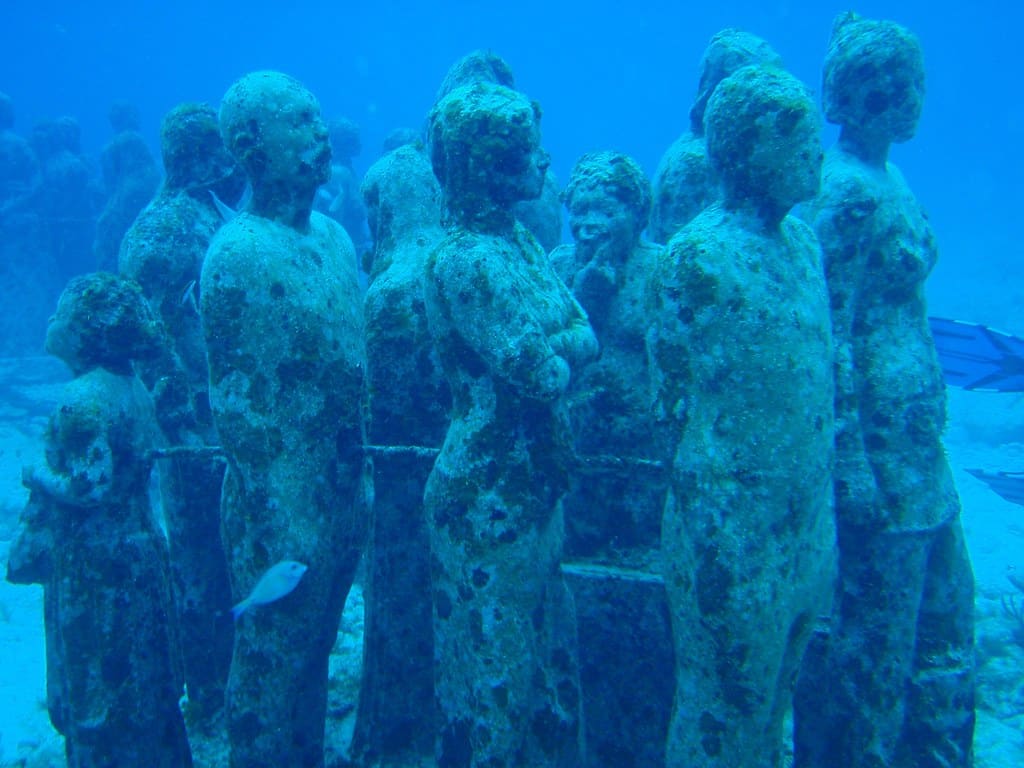Submerged art: MUSA, the Subaquatic Museum of Art

You’ve probably been to many art museums, but have you ever been to one under the sea? Visiting the underwater galleries of the Subaquatic Museum of Art (MUSA) and swimming around its sculptures is an experience like no other. One that is especially rewarding when you learn this museum has a purpose beyond sharing the beauty of art with its visitors. With its three locations between Cancun and Isla Mujeres, there is plenty to see.
Why build an underwater museum?
Though the idea of a submerged art gallery is unique, it is far from being a gimmick. The MUSA Subaquatic Museum spawned from an ecological worry. It’s an effort to preserve and restore the reefs in Cancun and Isla Mujeres, damaged due to pollution, and raise awareness about the dangers of global warming. The sculptures are made from a mix of materials to encourage the formation of corals and other marine life.
Where are the galleries of the MUSA subaquatic museum?
Since the first statue was sunk in 2009, the MUSA museum has opened three underwater galleries in three different spots around Cancun and Isla Mujeres.
Manchones, the first, off the coast of Isla Mujeres, is the largest. It’s the most famous piece, called “Silent Evolution”, which consists of an army of life-size human sculptures. With a depth of 30 feet, give or take, this gallery is best experienced with scuba gear.
Just south of Cancun’s hotel area, Punta Nizuc’s gallery is shallower. Because of its shallow depth of 6 to 13 feet, its 33 sculptures can be experienced with just a snorkel and mask. That’s also the case with the gallery at Punta Sam, north of Cancun, with its 11 feet in depth. Both make up a great adventure to experience with the whole family.
Are MUSA’s sculptures by real artists?
Yes. British artist Jason Decaires Taylor was the first to “sink” a piece specially designed for MUSA, and, since then, also functions as the museum’s artistic director. Others include Mexican artists with different backgrounds, like Karen Martinez Salinas, a graduate of the National School of Visual Arts, and Rodrigo Quiñones Reyes, a curator from the Art School of Yucatan.
For more information and bookings visit:
